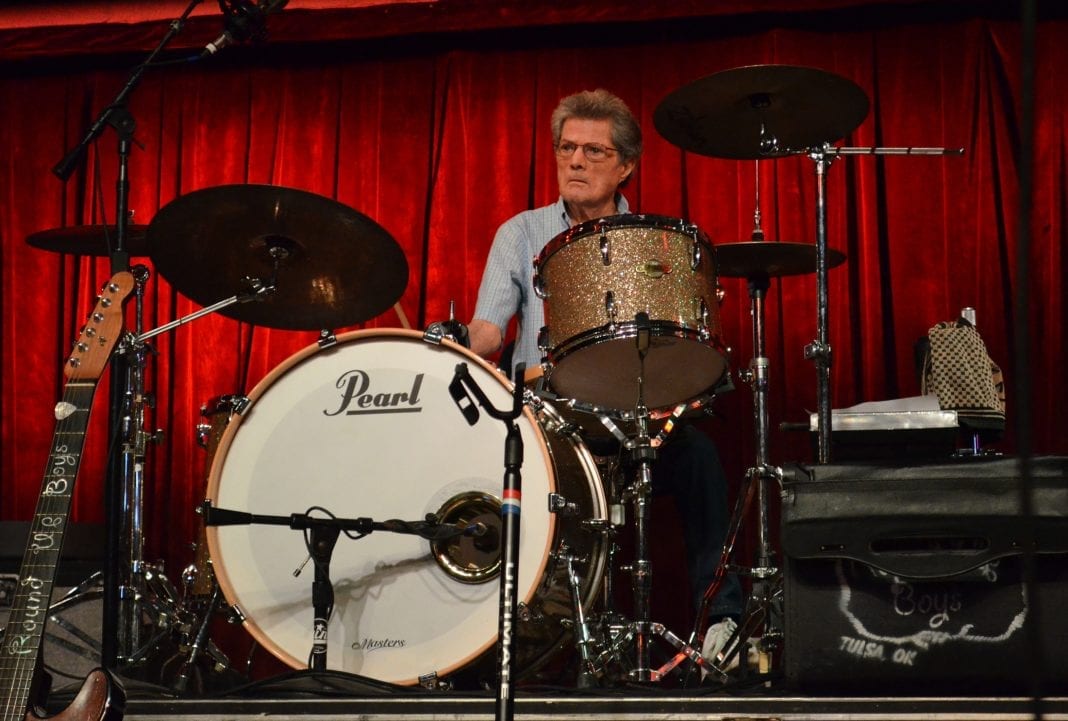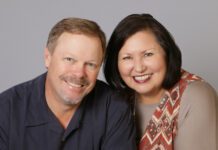Over the years, I’ve been fortunate enough to have written or co-written several books about Oklahoma’s pop culture history. Every time I’ve done one, I’ve learned a lot – not only while digging into the research and conducting the interviews, but afterwards as well. One of the biggest things I’ve learned is not to get too arrogant about what I know or think I know. It’s like the old saying about being the fastest gun in the west: There’ll always be someone faster.
To put it another way: No matter how big of an expert you believe you are on a subject, it’s wise not to get too full of yourself about it, because something is likely to come along to show you how little you really know. For me, that invariably happens after one of my books has already seen print.
Here’s a case in point. Brett Bingham and I have a new book out about the first 75 years of Tulsa’s Cain’s Ballroom (1924-1999), which is not only the Carnegie Hall of western swing, but also a place that was instrumental in the cosmic-cowboy movement of the 1970s; a stepping stone in the careers of such acts as U2, Van Halen, and the Police; and one of the few stops on the Sex Pistols’ notorious American tour. An unauthorized tome called Twentieth-Century Honky-Tonk, published by Bill Bernhardt’s Babylon Books, hit the market in April and has been doing very well since, for which Brett and I are very grateful.
We researched Twentieth-Century Honky-Tonk for years, interviewing dozens of people. Yet, the ink was still wet on its pages, metaphorically speaking, when I realized I’d overlooked a great resource. It was during a conversation with a good friend of mine, the drummer and percussionist Jim Karstein. Our talk turned to the book and the Cain’s eras it chronicles, and Jim, as great a storyteller as he is a drummer, began relating some of his own experiences at the venerable dancehall.
There he’d been, right under my nose, and I hadn’t thought to interview him for the book. I should’ve known better. Karstein had been in the first wave of the original Tulsa Sound guys, those young ’50s rock ‘n’ rollers who’d headed for L.A. in the ’60s. Many ended up making significant impacts on popular music, and Karstein was one of them. Then, when he headed back to Tulsa, his return dovetailed with the golden era of the Tulsa rock-music scene – and the beginning of the Cain’s Ballroom’s rock era.
“I was in Tulsa for almost the whole ’70s,” says Karstein, “and that was kind of fortuitous because, for my generation, the ’70s were really the high-water mark for music in Tulsa. Leon [Russell] had moved Shelter [Records] back here, people like George Harrison and Bob Dylan and Eric Clapton and Bonnie Raitt were coming through town, and the Magician’s Theater, the Nine of Cups, and the Cain’s – I mean, they were on fire. Tulsa was hitting on all eight cylinders.”
Although the Cain’s, for the first half-century of its life, had been known for its western-swing and country shows, a group of young promoters had leased the venue in 1974, turning it into what some of the old-timers called “a hippie joint.” One of those lessees was R. C. Bradley, a Holland Hall graduate who’d gotten into entertainment booking as a student at Duke University.
“R.C. was a great guy,” remembers Karstein. “He had a good nature about him. I was down there at the Cain’s one night – I don’t think I was playing, just there to see somebody – and he came up to me and said, ‘Karstein, I’m going to book Lightnin’ Hopkins in here, and I want you to put the band together.’
“And I said, ‘Well, all right.’”
Karstein was pumped because, like many rockers of the time, he revered the old bluesmen, and Texas native Hopkins was one of the most legendary of the bunch. So he waited to hear more from Bradley. And waited some more.
“At least two months went by, maybe three, and I was down at the Cain’s again when Bradley came by. “Say,” I said, “what about all that B.S. you laid on me about Lightnin’ Hopkins?’
He said, ‘I was talking to him this week, and I’ll have him booked in here in the next 30 days. Get that band together.’ So I started cogitating, as they say.”
He ended up asking a Tulsa bassist named Charlie Richardson (“He was young, easygoing, soft-spoken, and played great bass,” says Karstein) and guitarist Marc Benno, who’d worked with Leon Russell as half of the Asylum Choir and had a couple of albums out as a solo artist. At the time, Benno was living back in his native Texas.
“I’d gotten to be good friends with Marc, so I called him and said, ‘You remember how you used to tell me stories about back in the old days, when you used to travel around Texas and play guitar with Lightnin’ Hopkins?’
“He said, ‘Well, yeah, but it wasn’t Lightnin’ Hopkins. It was Mance Lipscomb.’
“And I said, ‘Don’t tell anybody. Just come on up.’”
When those three musicians met Hopkins at the Cain’s before the Friday night show, Karstein’s kit included a drum head he’d had designed especially for the gig, featuring a lightning bolt with the name “Lightnin’” on it, above a weather vane that read “Hopkins.” He’d even come up with a bit of razzmatazz to kick off the show.
“When I had one of those kinds of drum heads, I always put in an interior bulb to light it up,” he recalls. “So I had this great show-biz idea to hit a drum roll, have the announcer say, ‘And now, ladies and gentlemen . . . ,’ hit a crash on my cymbal, and have someone plug in the electric cord for the light at the same time, just as the announcer says, ‘Lightning is about to strike the Cain’s Ballroom!’
“I did the drum roll, but the guy didn’t plug in the light and the announcer blew the line,” he adds with a laugh, “so my million-dollar idea was a failure.”
While he calls the Hopkins shows the high spot of his work at the Cain’s, he’s played dozens – probably hundreds – of times on its stage since then, as a member of top local and regional groups like the Bop Cats, the Red Dirt Rangers, and the Bill Davis Band; with his longtime friend and musical companion J.J. Cale; and sitting in with the likes of Joe Cocker and many other national and international acts.
When asked why he thinks he’s performed so much there, Karstein gives a typically modest answer: “Well, I think it’s because I always had two shots at it. If somebody didn’t hire me to play drums, they might want me to play percussion – you know, ‘Get your congas and come on down.’”
In recent years, health issues have curtailed Karstein’s musical appearances. Now, he says, he’s down to one gig a year, appearing with the band Cowboy Jones for the annual Senior Star Round Up, an afternoon dance aimed toward the over-65 set that benefits Life Senior Services. It’s held each summer at the Cain’s.
At this writing, it remains possible that the pandemic will put a halt to this year’s Round Up. But whether or not the 2020 version happens, Karstein says, ‘that’s probably the last gig I’ll ever play in my life. With all this COVID business, I doubt seriously if they’ll do one this year. But if things settle enough next year, and if I live long enough, a Cain’s gig will probably be the last gig I ever do.”



























